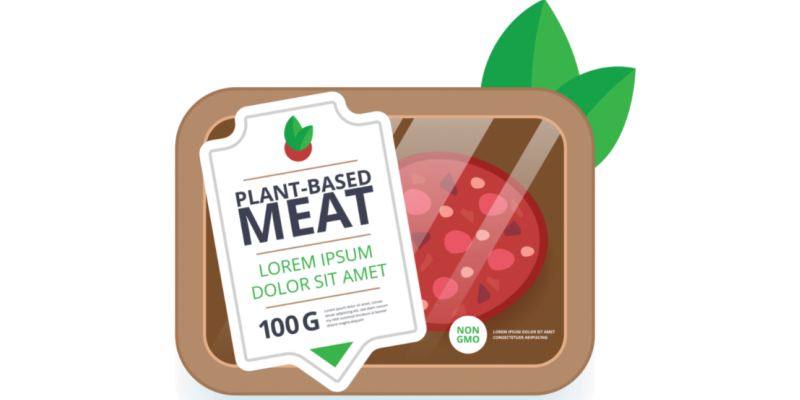By Emmy Bawden | Photo from Shutterstock
Plant-based, meatless “meat” products have exploded in popularity in recent years. With so many options available, it’s confusing to even know where to start. Here’s what you need to know.
WHAT ARE MEATLESS MEATS?
Designed to taste, feel and even look like real meat, meatless products are meat alternatives that replace animal protein with a plant-based source. However, not all meatless meats are created equal.
For starters, they use different plant proteins. Some use pea, fava and mung bean. A brown rice protein mix is in Beyond Meat burgers, and a potato and soy protein mix is used in the Impossible Burger. Some products, like those from Morningstar and Boca, still add some animal proteins like egg whites and cheese. Most meatless meats use coconut oil as the primary fat as it gives a good texture and sizzle while cooking, but it’s not uncommon to also see sunflower or canola oil in the mix. Beyond Meat also adds coconut butter for even more meat- like texture.
Speaking of meat-like, some products use ingredients like beet juice to give the illusion of meat taste and a sometimes “bloody” appearance. Other flavoring agents used include salt, fruit juice and extracts, vinegar and sugar.
Plant fiber such as methylcellulose is a common ingredient, and though some may consider these cheap ingredients with no nutritional value (commonly referred to as “fillers”), they actually bind ingredients together and add satiety-boosting texture and fiber. Natural emulsifiers such as sunflower lecithin are also used to allow oil and other ingredients to combine ( just like the role egg yolks or mustard play in salad dressings).
While ingredients with names like pyridoxine hydrochloride and cyanocobalamin may seem scary, they’re the actual names of vitamins B6 and B12, as many of these products are fortified with vitamins and minerals. Beyond Meat and Impossible Burgers both have at least 100% and 20% respectively of your daily vitamin B12 and iron needs — two nutrients that are often deficient in plant-based diets.
Jackfruit, another meatless option, has recently grown in popularity. Brands like Upton’s Naturals are selling this fruit from India and Asia as a meat-alternative with a stringy, fibrous texture perfect for favorites like BBQ sandwiches. While many jackfruit products have the advantage of simple ingredient lists and shelf stability, they only have 7% of the protein and 15% of the iron that Beyond Burgers offers.
My top pick as a dietitian is Lightlife Smart Ground Plant-Based Crumbles. They are incredibly convenient to throw in tacos and salads, and significantly lower in saturated fat and sodium than other products (less than 1 gram and 260 milligrams, respectively, per four ounces). Lifelight’s parent company, Greenleaf Foods, is also 100% carbon neutral.
Overwhelmed by options? Here are some guidelines:
- Opt for a product with about 20 grams of protein and greater than 20% of your daily iron and vitamin B12.
- On a low-sodium diet? Choose those with less than 300 milligrams sodium per serving.
- Looking to increase your fiber? Choose those with more than 3 grams per serving.
- Watching saturated fat? Avoid products with coconut oil listed as the first fat ingredient.
ARE MEATLESS MEATS BETTER FOR YOU?
In 2015, the World Health Organization concluded red meat is probably carcinogenic and processed meats, such as bacon, certain deli meats and hot dogs, are carcinogenic to humans. Knowing this association with cancer, particularly colorectal, swapping in plant-based meats might seem like a no-brainer!
While replacing meat with plant-based proteins like beans and whole grains can reduce cancer risk, it’s unclear whether these highly processed products have the same benefit. One of the ingredients in question is heme iron, which Impossible Burgers uses for meaty taste and texture. Heme iron is found only in animals, but in this case, DNA from soybean plant roots is inserted into genetically engineered yeast, which is fermented to produce heme (aka soy leghemoglobin). Here’s the controversy: Meat-based heme iron is one of the proposed links to cancer, which raises questions about soy leghemoglobin because it has not been well-studied so the long-term effects of frequent consumption are therefore unknown.
Looking at the nutrition facts, while meatless meats have significantly more sodium than animal meat, they have zero cholesterol and offer more fiber. However, meatless products have more fat than lean meats like chicken breast and 90/10 beef. Although meatless products are a great entryway into plant-based eating, they’re still highly processed, and should be treated like red meat and enjoyed in moderation (less than 12-18 ounces per week).
ENVIRONMENTAL IMPACT
Livestock accounts for 14.5% of global greenhouse gas (GHG) emissions (with the largest impact from cows), which significantly contribute to climate change through deforestation, pollution and resource wastage. While there are ways to eat meat more sustainably, the footprint of meatless products is significantly smaller. Experts estimate they use up to 99% less water and land and produce anywhere between 34-93% less GHG emissions. However, experts still agree that there is more to understand about the overall carbon footprint of the meatless meat industry, as agriculture is only one piece of the puzzle.




